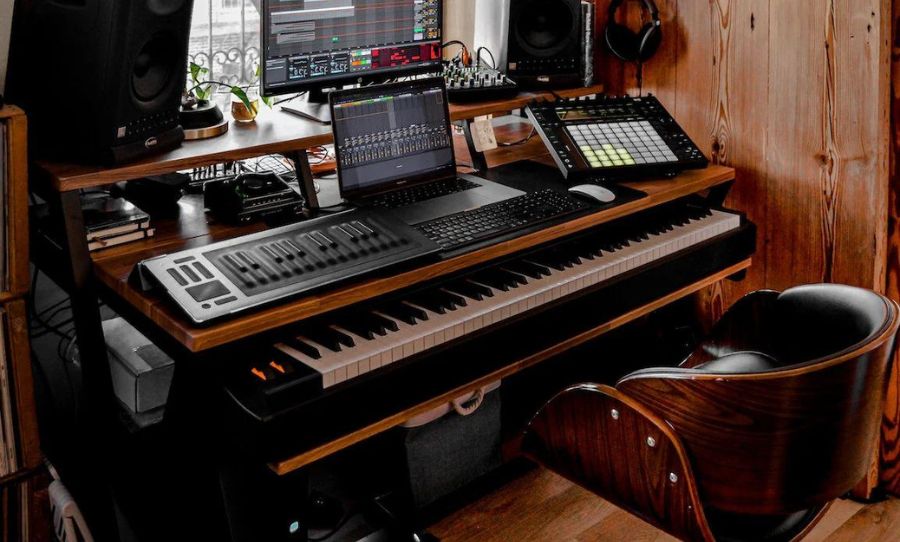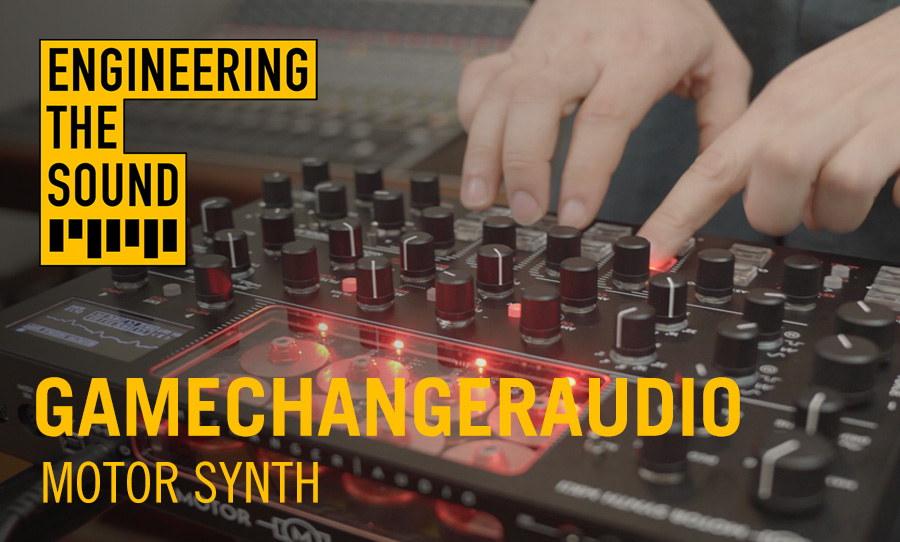If you flick back through the pages of 20th-century history, the division of Germany after the Second World War ranks as a significantly dark period. The austerity and oppression East of the border seemed hardly an environment conducive to the building of monuments to art. Nevertheless, Funkhaus Berlin came to be.
This early ’50s monolith – designed by Bauhaus school architect Franz Erlich – was the home of East German broadcast. At the height of the regime’s powers, the Funkhaus had thousands of staff and could easily accommodate symphony orchestras and other large ensembles, broadcasting performances across the Soviet state.
When the Berlin Wall finally came down, this giant complex fell into disrepair. In recent years, however, Funkhaus Berlin has been rejuvenated, once again hosting concerts and providing artists access to unparalleled sophistication in acoustic space and studio design.
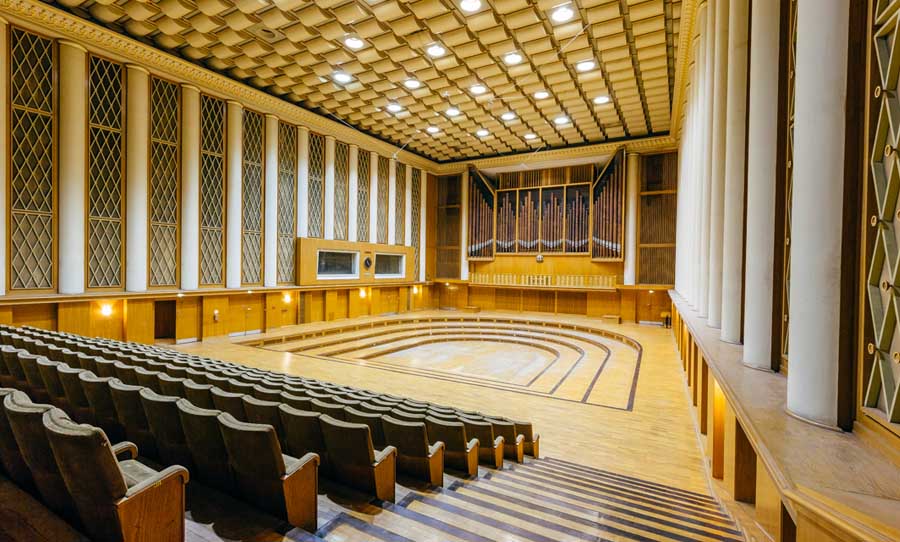
Once relegated to the dustbin of history, Funkhaus Berlin has been restored to its former glory. This Soviet-era complex is a monument to the power of sound.
Space to roam
Founded in a former plywood factory, the Funkhaus became the focal point for East German broadcast in 1951. The Cold War was heating up and the Soviet Union would soon be involved in the Space Race. The battle for world supremacy obviously made it to the studio as well; they were not mucking around when they laid foundations for the Funkhaus.
Beyond the former factory site, Block B was added in 1956, coinciding with the opening of Capitol Studios, a million miles away in sunny California. This block houses the two largest studio spaces, Halls (known in the Funkhaus as Saals) 1 and 2.
By any standards, these spaces are jaw-droppingly huge and one can only imagine what it was like to open the doors to these spaces in the 1950s. Saal 1 features a clear 800 square metres of floor space, so it’s more like a concert hall rather than a traditional live room. But record it did (and still does), becoming the premium orchestral recording studio of the nation.
Saal 2 features half of Saal 1’s floorspace and half of the reverb time (1.2 seconds compared with Saal 1’s 2.4). If Saal 1 was the home of classical, Saal 2 was better suited to smaller ensembles and pop recording, even though it’s still an immense space.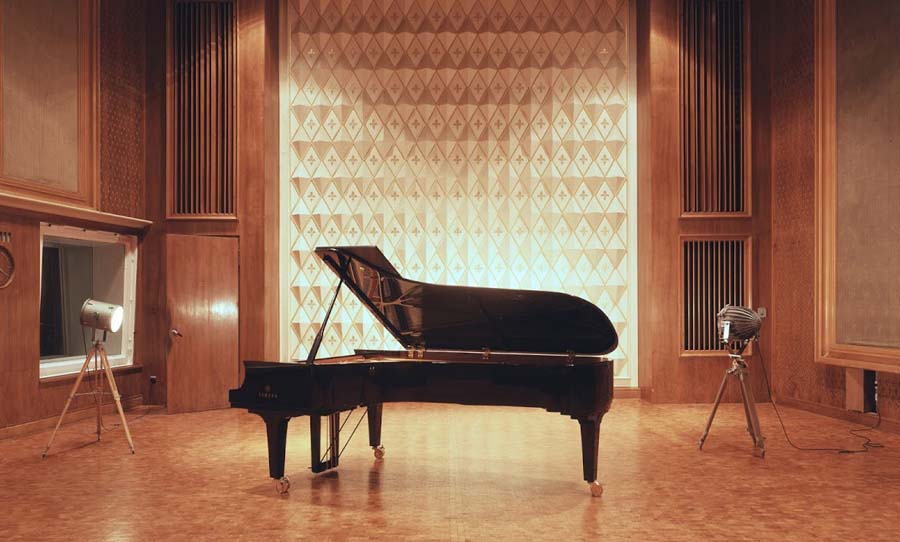
Saal 3 is smaller again and the traditional venue for chamber orchestras. A recent resident was electronic composer, Nils Frahm. He took advantage of the acoustics on offer to compose All Melody – an album which seamlessly blends intricate synthcraft with orchestral and vocal sounds.
Saal 4 is the studio that resembles a more modern studio configuration, with isolation booths for drums and other instruments to creates separation. Attached to this section are differentiated acoustic spaces that were designed for radio plays, that have an array of different surfaces for foley effects. There’s even a ‘Sound Chamber’ – an environment straight out of a post-apocalyptic video game. It’s a concrete labyrinth with Escher-esque staircases and catwalks and able to capture any conceivable reverb.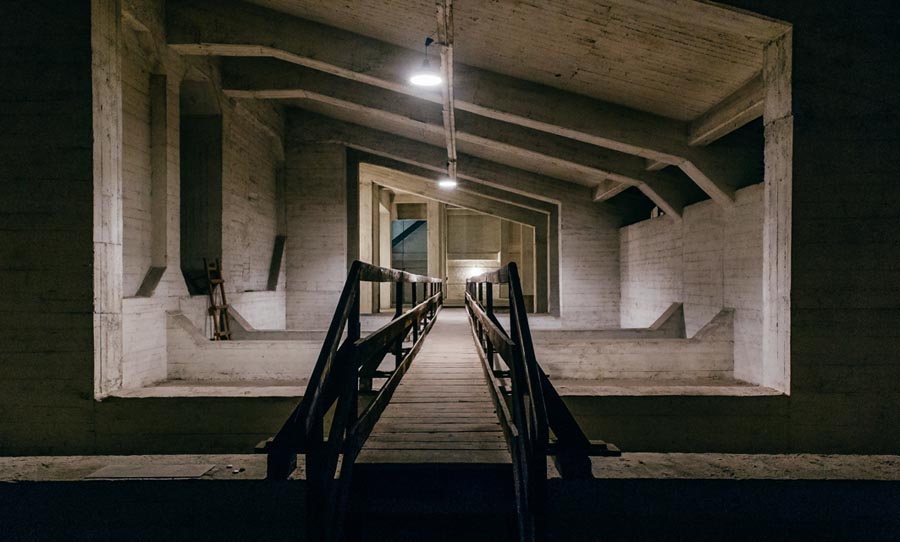
Not only are the live spaces well-equipped for any type of recording, but there are also some vintage pieces of processing gear that are unlikely to be found in many other places. The main control room is centred around a Pro Tools rig, with a D-Command console and a Neve 5106 sidecar. There is an extensive preamp collection from the likes of API, but the real showstopper is its complement of 26 RFZ V781 preamps. According to Hannes Bieger of Sound on Sound:
“These discrete, transformer–balanced preamplifiers, designed by the Rundfunkzentralamt (central broadcast agency) can be seen as East German counterparts to the more common West German modules of the V676 family, made by Siemens/Telefunken.”
A legend is reborn
Key to the rebirth of Funkhaus Berlin was the fact that it invited artists to perform and take up residency in this vast complex. Resident producers can take advantage of routing from single control rooms to multiple live rooms, in order to harness the appropriate acoustic setting.
The Funkhaus regularly hosts a variety of artists who have a propensity to work with this unique environment, rather than try to conquer it. In recent times, it’s been the venue for performances from Aphex Twin, Depeche Mode, Four Tet and Australian improvisation masters, The Necks.
Placing the Funkhaus in the pantheon of legendary studios is a fool’s errand. There’s simply no other place like it. Created in an environment where commercial goals were not imperative, there were no shackles on its development.
Adding to the sense of anachronism is the way in which the Funkhaus encourages you to think about sound. These spaces – designed to the highest possible acoustic specifications – require an approach to recording that isn’t the norm today. The reflections, adjustable reverb times and selection of surfaces mean that you can create and commit to a unique ambience without turning to effects after the fact.
The fact that this sonic ark still exists is a minor miracle. With a renewed interest from the public, artists and engineers alike, this space with an eye to the past has a bright future.

